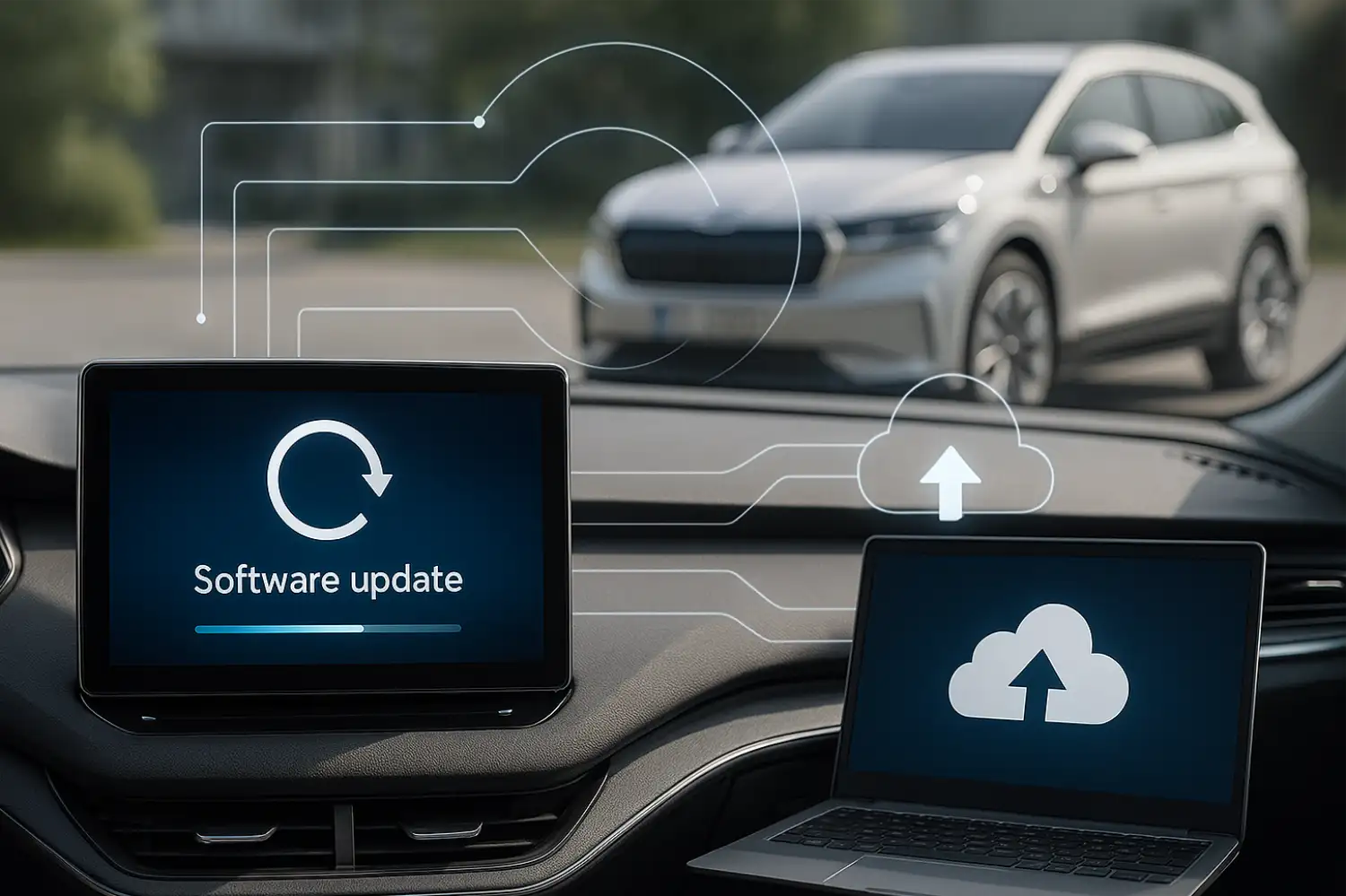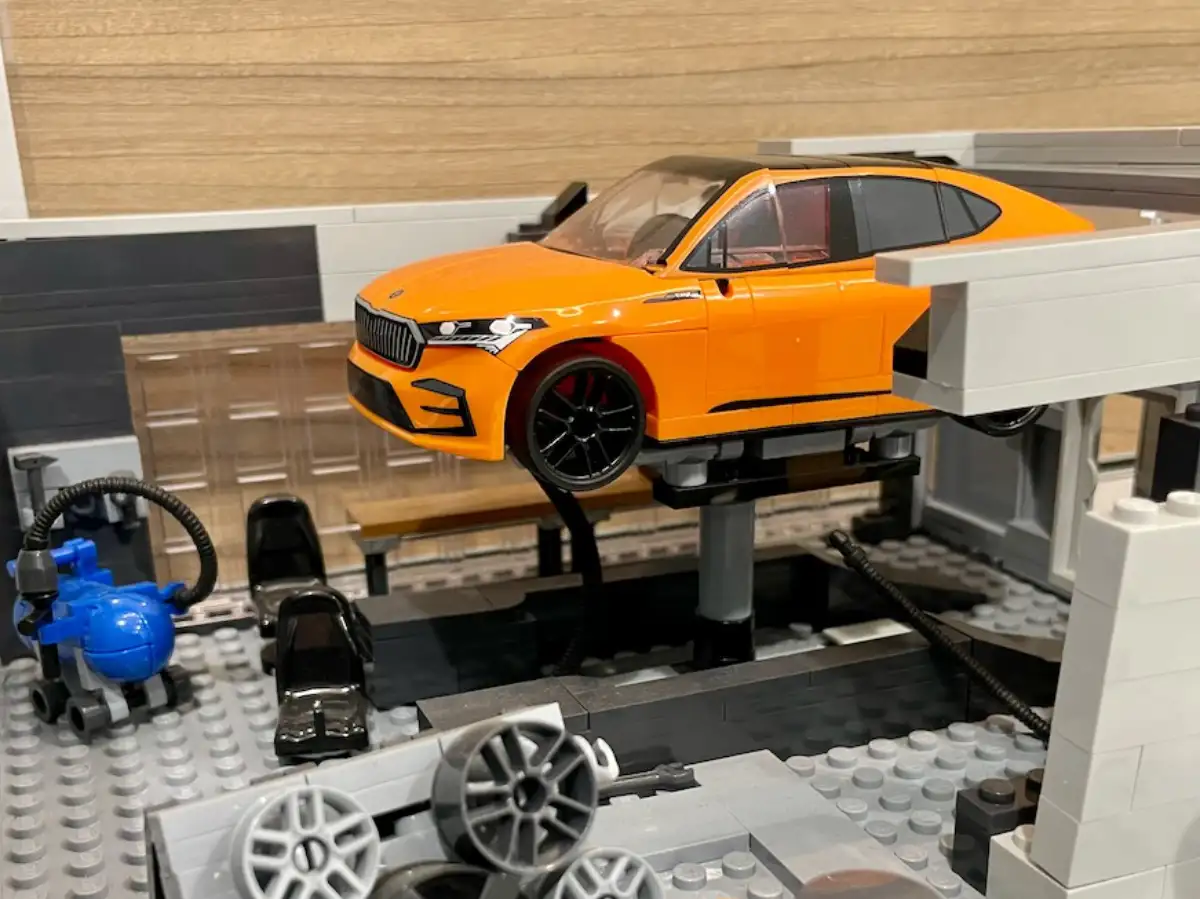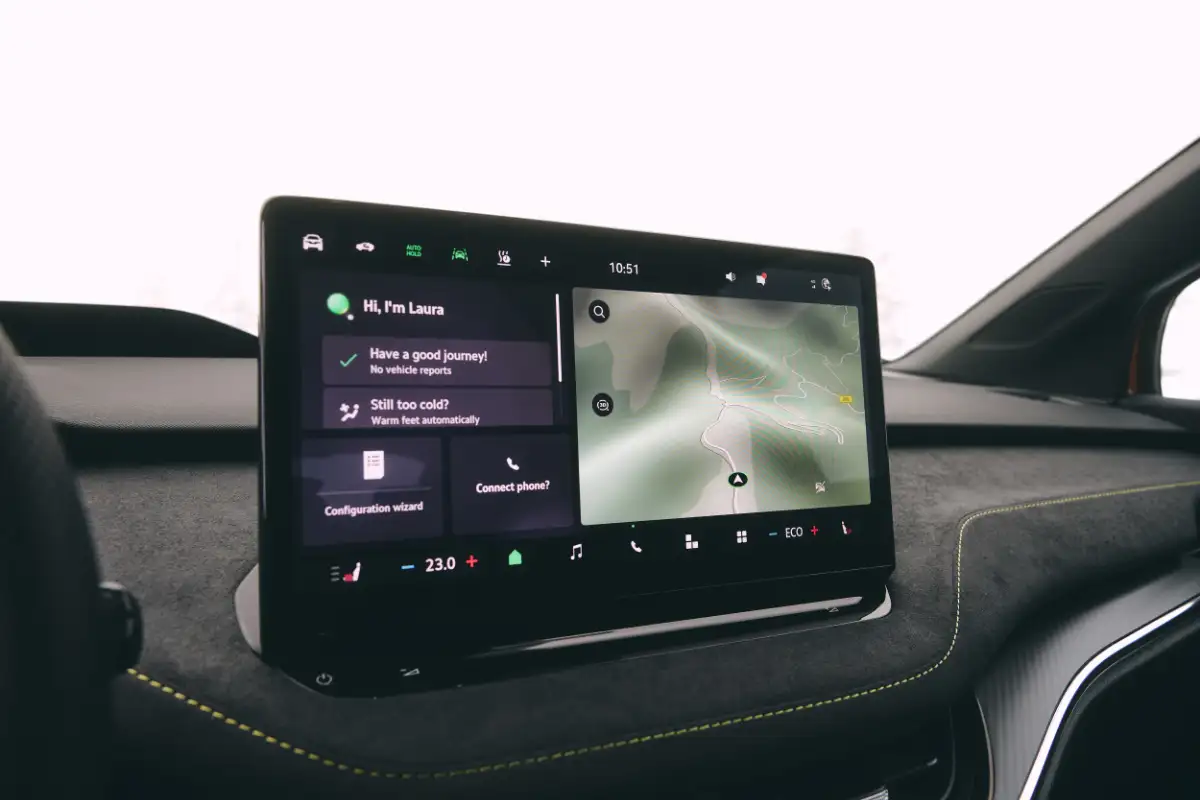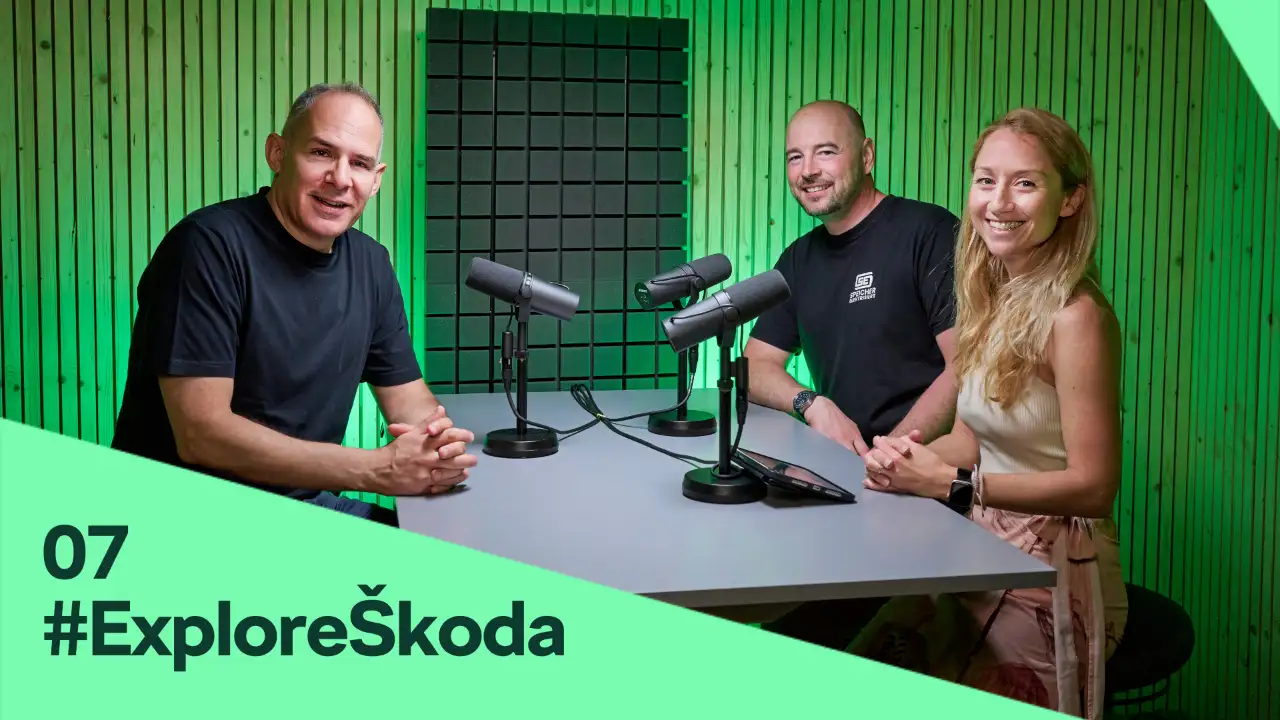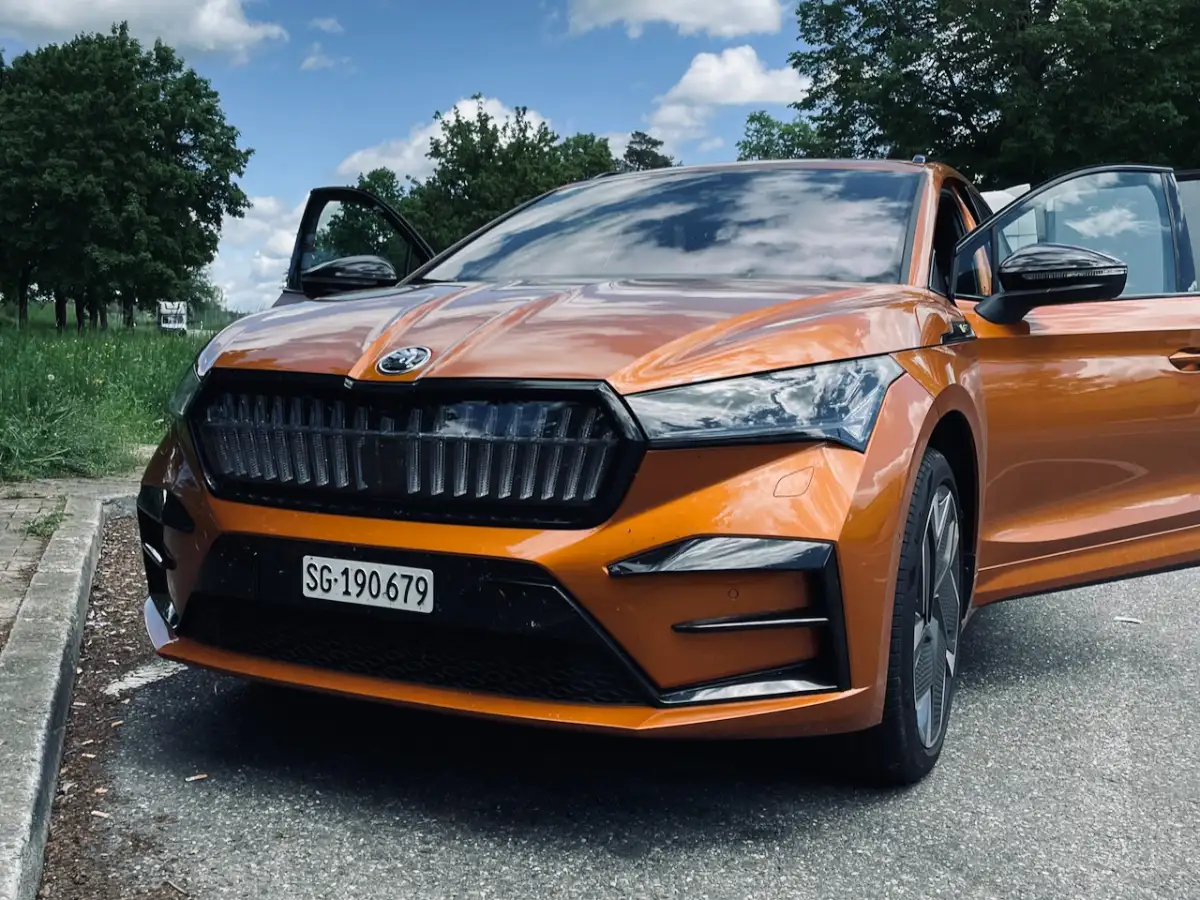Modern electric vehicles like the Škoda ENYAQ or ELROQ are often referred to as rolling computers. But a closer look reveals: many infotainment systems age faster than expected. The reasons for this lie deep within the vehicle architecture and the software development structures of the Volkswagen Group.
The MEB Domain Architecture – A System With Pitfalls
Volkswagen’s MEB platform is based on what’s known as a domain architecture. This means that many different electronic control units (ECUs) are responsible for specific functions – for example, drive systems, ABS, comfort features, or infotainment. These ECUs often come from different suppliers, each of whom develops their own software. This fragmentation not only complicates communication between systems, but also makes software updates complex and time-consuming.
Perhaps the most prominent example: pre-heating (automatic or manual) for vehicles running Software Version 3. It was never specified in the original documentation – simply because it wasn’t planned. Technically, it’s possible, but now every supplier involved must retrofit it. And each of them will submit their own invoice. Testing is extensive, costly, and bureaucratically complex.
CARIAD – Great Ambitions, Structural Challenges
To centralize software development, Volkswagen established a dedicated subsidiary: CARIAD – short for “CAR I Am Digital.” The goal was to create a unified software platform (VW.OS) for all brands in the group. But the implementation has been far from smooth.
CARIAD functions more like an internal service provider than a strategic software leader. The requirements still originate from individual brands, leading to long coordination processes. Add to that the autonomy of some brands and their special requests. Instead of setting the direction for a software-defined vehicle (SDV), CARIAD had to deliver what the brands paid for – rather than what was strategically best.
In-Car Apps and Their Limitations
While system updates often take months or years, new apps such as “Traffication” or “Powerpass Map” regularly appear. These are integrated directly into the vehicle’s frontend – but they have no access to core vehicle functions or ECUs. They cannot control the climate system or retrieve battery or drivetrain data. And because they’re developed using different frameworks than the main infotainment platform, they often feel disjointed – more like add-ons than integrated features.
The MyŠkoda App also does not communicate directly with the vehicle, but instead through Volkswagen’s cloud servers. This introduces delays and makes the app entirely dependent on server availability. Especially in the early days of the MEB platform, frequent server outages rendered the app temporarily useless.
Over-the-Air Updates – Theory vs. Reality
When MEB vehicles first launched, Volkswagen made bold claims: all MEB cars, despite having over 50 control units, would be updated over the air (OTA), without needing a service visit. New features and improvements were promised on a quarterly basis.
Now, nearly five years later, we know the reality looks very different. Updates are delayed, fail during installation, or introduce new bugs – if they happen at all. The promise of “every 3 months” has become more like “every few years.” What was touted as “Over-the-Air” has become, somewhat bitterly among customers, “Over-the-Dealership.” A running joke in the community – if it weren’t so frustrating.
A prime example is the first-generation Škoda ENYAQ iV, where most software updates still have to be installed at the dealership. The long-anticipated update to Version 3.7 has been “rolling out” for nearly a year – and many customers are still waiting.
A Long Road to Software Maturity
The challenges of software development and system updates in vehicles like the ENYAQ or ELROQ show that both Volkswagen and Škoda still have a long way to go. The current architecture, with its multitude of ECUs and varying software versions, makes fast and reliable updates nearly impossible. Centralized development via CARIAD is a step in the right direction, but structural issues and organizational inertia continue to hold things back.
The real solution lies at the architectural level. The future must move from today’s domain architecture to a zonal architecture, with fewer control units – ideally only 3 to 5. Software becomes the lead architecture, and the vehicle hardware follows. This wasn’t feasible at the MEB launch, where speed was the priority and legacy hardware had to be used. But the next-generation platform, expected around 2029/2030, will look fundamentally different.
Until then, let’s hope that newer software versions can at least mitigate some of the current limitations – and that regular updates will become a reality rather than an exception.
All is lost?
Despite all the challenges, it’s important to acknowledge one thing: the current software version 5.4 is a significant step forward. It’s stable, the driver assistance systems work reliably and more smoothly than with many other manufacturers. The customization options are well-designed and flexible. In short: the software is modern – and it shows what’s possible when systems are truly matured.

